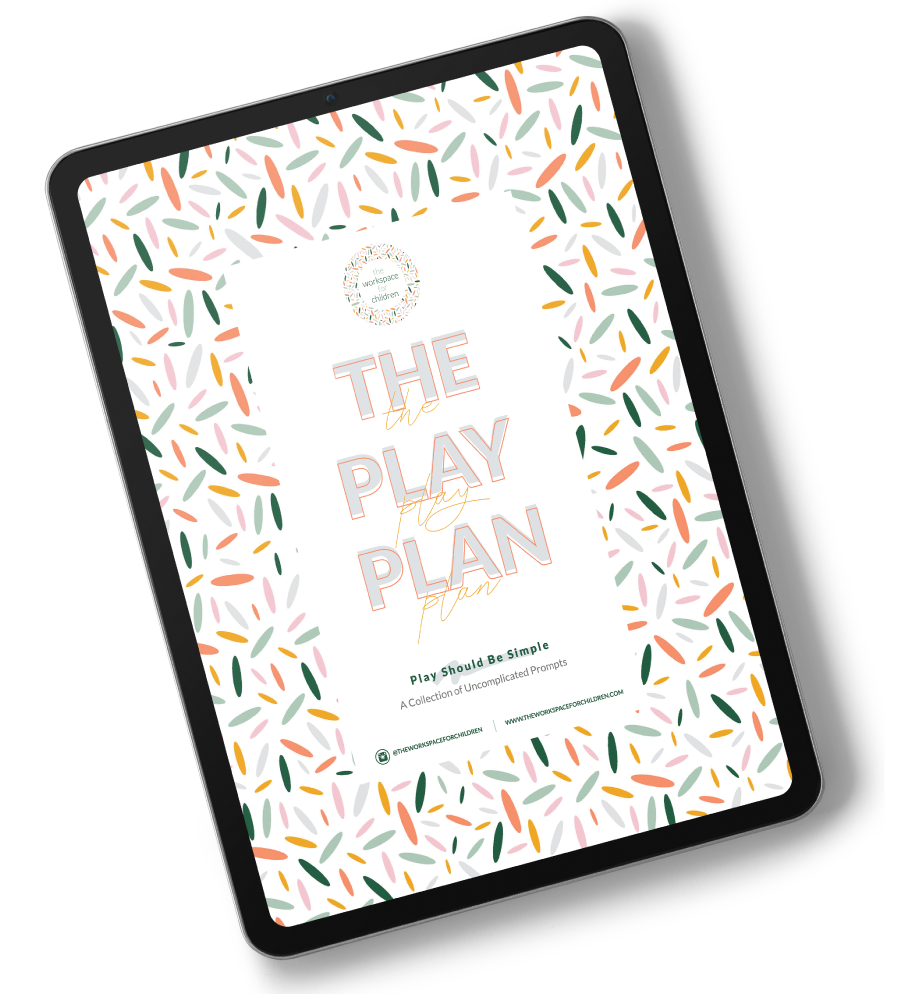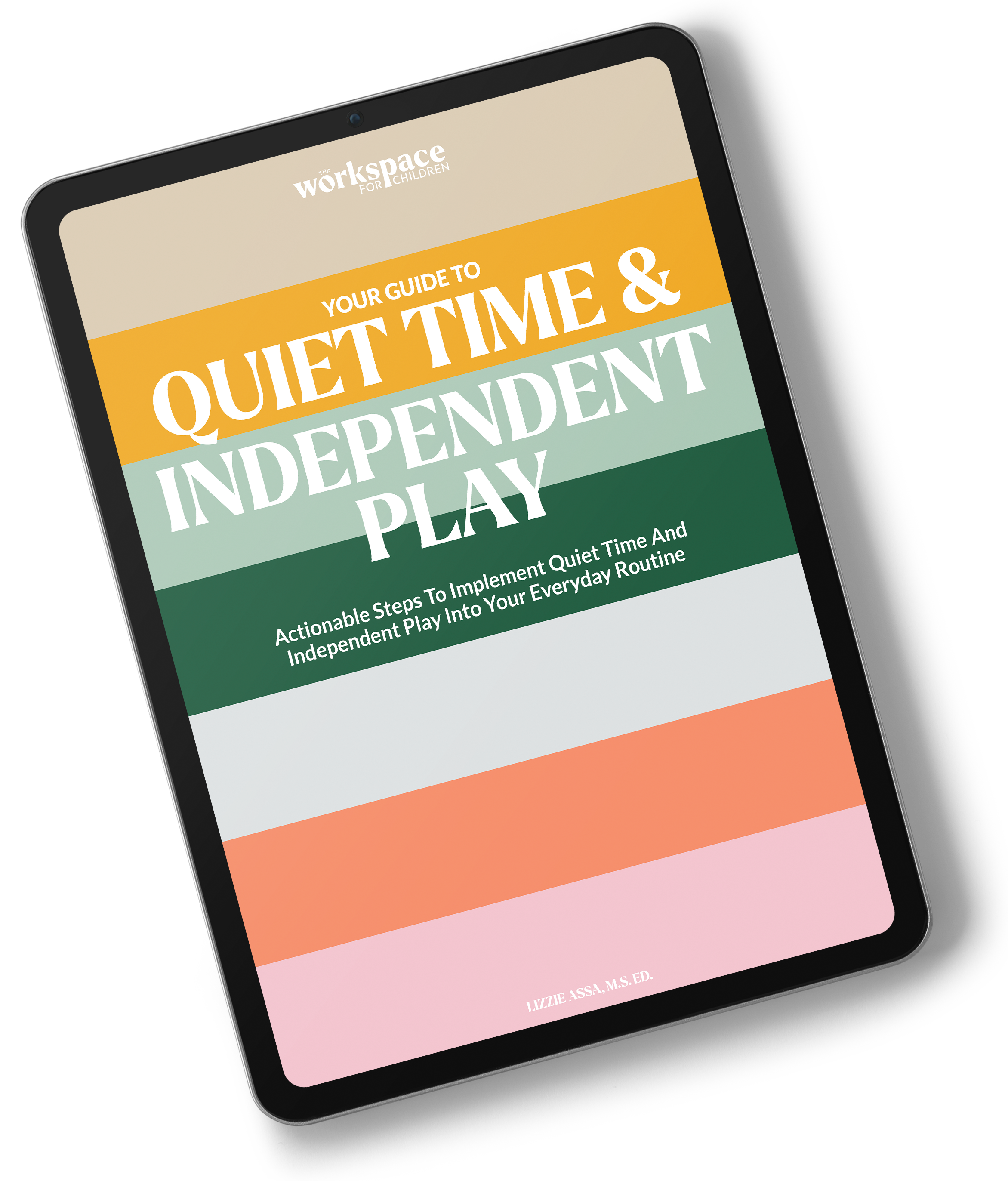Winter Activity for Kids in the Woods
/Make a simple cranberry garland for the birds… an easy Winter activity your kids will love!
Read MoreMake a simple cranberry garland for the birds… an easy Winter activity your kids will love!
Read MoreIt is normal for your child to have anxiety around heading back to school over the break….
Read MoreWhat to do with your active kids when you are stuck indoors.
Read MoreDo your kids ask you to buy them things non-stop around the Holidays (or even year-round)? I have a simple strategy for you.
Read More
If you want to raise confident kids, stop saying this popular parenting phrase:
“You get what you get and you don’t get upset.”
I will never forget the first time I heard this phrase. I was in grad school, doing my student teaching. I sat on the floor in my corduroys and converse, surrounded by a circle of three year olds.
The kids cheered and squealed as the music teacher showed the kids all of her treasures. She started to pass them out and the kids started shouting, “I want the blue shaker egg!” “I want the pink maraca!”.
She settled the children down by loudly stating, “Children. You get what you get and you don’t get upset”. I watched as she praised a child who looked crestfallen, but didn’t open his mouth to express how he felt about his instrument.
I felt a pit tighten in the ball of my stomach. This felt wrong. I was a student-teacher not in a position to do anything other than wipe noses and observe. I stayed quiet, but the feeling never went away. I vowed never to teach that phrase in my own classroom.
Look at this from a child’s perspective. Using language similar to this phrase sends children the message that they shouldn’t ask for what they want. It’s telling them to stuff their feelings and accept things as they come.
Give them the opportunity to say, “I am upset. I really wanted the blue balloon and I got the red shaky egg instead”.
Stopping your child from expressing their emotions sends the message that their feelings are wrong and that you as their parent cannot handle their feelings. It also teaches them that they are supposed to hide how they really feel.
Your child is allowed to be sad, mad, angry, and disappointed. It’s okay for them to get upset.
Your child needs the opportunity to practice coping with not getting what they want in a supportive environment.
Now imagine your preschool-age child as a teen or tween. Do you want them to hide their feelings when they are upset or when something is bothering them? Or do you want them to be able to speak up for themselves and trust their emotions?
“I have a bad feeling about the way this guy is treating me. I am uncomfortable…”
You want to raise confident kids that are able to trust these inner feelings and instincts, not have the belief that they can’t get upset and think that they are overreacting.
Allowing your child to fall apart and accepting their emotions when they don’t get what they want, does not mean that you have to give in to what they are wanting just because they are disappointed. Acknowledging what happened is enough.
This may sound like:
“You wanted the blue egg and you got the yellow one. I saw what happened.”
“You got the yellow egg when you wanted the blue one. Now you are grabbing the yellow one. I won’t let you grab.”
Take a moment to calm your child. After your child is calm, try getting them curious about what they are feeling!
“You got the yellow and wanted the blue. You tried to grab, but I wouldn’t let you. What could you have done instead? Any other ideas?”
Young kids will have great ideas (as long as they are regulated and calm) about what they could do differently and they will love realizing that they have autonomy in the process!
Hearing the word no is an opportunity for your child to learn coping skills and build confidence. Take these opportunities to teach your little one that they can be okay even when they don’t get what they want.
But how do you teach them that they can be okay without falling apart any time they are disappointed?
Practice. Try acting out not getting what you want and then ask your child what they think you should do. Kids want to be respected and part of the process. Teaching them these skills will help them realize that they can make choices and problem solve when things don’t go their way.
Check out this blog for some ideas of scenarios you can practice with your child.
If you have used the phrase “You get what you get and you don’t get upset” in the past, don't beat yourself up. This phrase comes from a place of good intention.
You can support your child’s big feelings without canceling them.
I hope you enjoyed this blog! If you want to keep up with more Workspace for Children content, follow along on Instagram by clicking HERE.
Feeling Like a 'Bad Parent'? Here's Why You're Not - and One Simple Trick to Boost Your Kid's Independence
magical thinking/ how to know what’s too scary/ halloween hacks for the toddler set

THE PLAY PLAN
The Play Plan is an ebook containing play invitations that are easy to set up, inexpensive, and apply children of all ages. The 25 play prompts are divided into five categories and use items that you most likely already have at home. These play prompts consider children of all ages, all developmental stages, and all learning capabilities. Each prompt can be tailored to fit your unique child’s needs. Play is meant to be simple.
$28

QUIET TIME AND INDEPENDENT PLAY EBOOK
This downloadable ebook is your personal guide to Quiet Time and Independent Play. This ebook will teach you the basic steps to implementing a Quiet Time and Independent Play strategy that works. The guide teaches you my proven 5 step method for implementing a daily break without using screens. (Guide includes 5 bonus invitations to play.)
$27
How to help your kids stay true to who they are now, and as they grow up.
Read More
We all doubt our parenting capabilities sometimes. There will always be a sense of hesitation and a lack of certainty around parenting. There is not one parent out there who can say with one hundred percent certainty that they have not made any mistakes.
Parenting is hard. Night wakings and poopy diapers are intense. Not knowing whether to sleep-train or co-sleep, whether to feed with breast or bottle. IT’S. NEVER. ENDING. I’ve been a mom for thirteen years. I have a Master’s Degree and lots of early childhood experience. I’m a mom to three children and an aunt to nine. I’m pretty good with kids and I know a lot about play and development. But, let me tell you…. IT IS STILL NEVER-ENDING. The parenting decisions that we make every single day can be insurmountable. We are lucky to have choices, even when they might feel overwhelming.

I am a good and capable mom because I love my children and I make choices with their best interests in my heart.
It is okay to make mistakes.
I’m teaching my children that perfection does not exist in a healthy and happy experience.
When I mess up, which is pretty much every day, I say to them…. I am still learning about being YOUR mom. I am still learning about how to take care of YOU. I don’t always make the right choices.
Every child is different and every person’s experience as a parent is different. It’s okay to experience some self-doubt. My goal is to become comfortable feeling a little bit uncomfortable. That’s when I know I am on my toes and growth is happening.

I wish for all of you to know that whether your child is sitting and eating cheetos in front of the TV or hand-sewing while eating organic brussel sprouts that they grew themselves, I think you are a good mom.
If you show up for your child and you love them, YOU ARE A GOOD PARENT.
I hope you enjoyed this blog! If you want to follow along with The Workspace for Children community, be sure to follow me on Instagram by clicking HERE.
X
Lizzie
Feeling Like a 'Bad Parent'? Here's Why You're Not - and One Simple Trick to Boost Your Kid's Independence
magical thinking/ how to know what’s too scary/ halloween hacks for the toddler set

THE PLAY PLAN
The Play Plan is an ebook containing play invitations that are easy to set up, inexpensive, and apply children of all ages. The 25 play prompts are divided into five categories and use items that you most likely already have at home. These play prompts consider children of all ages, all developmental stages, and all learning capabilities. Each prompt can be tailored to fit your unique child’s needs. Play is meant to be simple.
$28

QUIET TIME AND INDEPENDENT PLAY EBOOK
This downloadable ebook is your personal guide to Quiet Time and Independent Play. This ebook will teach you the basic steps to implementing a Quiet Time and Independent Play strategy that works. The guide teaches you my proven 5 step method for implementing a daily break without using screens. (Guide includes 5 bonus invitations to play.)
$27
Is “That’s not fair!” a common theme in your house? Read this.
Read More“I’m stupid!”. Does your child struggle when things become difficult? Here’s how to navigate these feelings and negative self-talk
Read MoreFIve tips to get your crew outside in all weather, plus our favorite gear.
Read MoreAre your little kids becoming big kids? Here are three ways to maintain a strong connection with them.
Read More
Have you ever noticed that whatever type of mood you’re in, your family follows suit? Whether you like it or not, your mood as the parent sets the tone.
Whether you’re feeling happy and energized, or down and stressed out, your child is most likely feeling the same way.
Let’s talk about what you can do to help your child cope with stress and find relief when times are tough.
Stress makes it so hard to regulate our own emotions.
Snapping at your child because you are mad at your partner.
Tuning your child out because you are worried about finances.
Being impatient with your child when you are waiting on crucial medical results.
Feeling exhausted and defeated before your little one even plants that first kiss on your cheek.
All of these feelings are completely valid and normal to have, and I understand wanting to find a way to try and eliminate stress altogether.
However, stress is inevitable. Stress is part of living a full life, and eliminating stress is not the answer. Rather than eliminating stress, learning how to tolerate stress is the goal.
Even as adults, learning to tolerate stress can be difficult. So just imagine how hard it can be for your child.
The best thing we can do for our children when stress comes knocking on the door is to teach them coping skills by modeling and practicing them ourselves.
Here are 5 things to try the next time you notice your little one may be feeling overwhelmed, anxious, or stressed out:
Sensory play is a great way to reduce stress, as well as calm and soothe anxiety. By stimulating your child’s senses through sensory play, they become more grounded and are able to better regulate what they are feeling. This activity doesn’t have to be anything fancy. It can be something as simple as spinning in a chair, running and jumping in the wind, cooking, or water play.
If you need a resource of uncomplicated play prompts, The Play Plan might be for you!
Sleep reduces irritability and anxiety, so it only makes sense to make sleep a priority when you are feeling stressed out and run down. If your child is out of the napping stage, a way to ensure that they are getting extra rest is to make a conscious effort to get them to bed earlier. Don’t overcomplicate it - just aim for a bedtime 5 minutes earlier than the night before, and continue this for a few days.
Getting outside is not only an easy way to reduce stress but it has also been scientifically proven to reduce stress hormones! Don’t think that you have to plan an extravagant outing for your family in order for this to be effective! It could just be you and your child taking a walk around the block. Even the smallest amount of Vitamin D will work wonders to help you both feel more at ease.
Water in all forms reduces stress. Try adding fruit to your and your little one’s drinking water for some extra flavor, go swimming, jump in puddles, even take a mid-day bath just for fun! Honestly, the possibilities are endless with this one.
If you’re looking for a fun activity for your child that is sure to lighten their mood, check out this blog to learn how to put together a toy washing station. It combines sensory play, water, and you could even do it outside. They’ll love it!
Take 10 minutes for just you and your child to connect. Turn off the screens, put the toys away, and just be. Sometimes the only thing our children need from us is our full attention. Be present and enjoy this time with them. Make eye contact, and let them know that you’re there for them.
I wish I could take away your worries and make everything turn out the way you want it to.
I know what it’s like to be feeling stressed out and then have “mom guilt” sneak in and make you feel like you are not doing a good job. I also know that you are an amazing parent.
By learning to cope with stress and teaching your children to do the same, you are giving them one of the best and most valuable life lessons you could possibly give them!
I hope you enjoyed this blog!
For more support and tips related to this topic, join The Workspace for Children community on Instagram! Let’s parent together.
Feeling Like a 'Bad Parent'? Here's Why You're Not - and One Simple Trick to Boost Your Kid's Independence
magical thinking/ how to know what’s too scary/ halloween hacks for the toddler set

THE PLAY PLAN
The Play Plan is an ebook containing play invitations that are easy to set up, inexpensive, and apply children of all ages. The 25 play prompts are divided into five categories and use items that you most likely already have at home. These play prompts consider children of all ages, all developmental stages, and all learning capabilities. Each prompt can be tailored to fit your unique child’s needs. Play is meant to be simple.
$28

QUIET TIME AND INDEPENDENT PLAY EBOOK
This downloadable ebook is your personal guide to Quiet Time and Independent Play. This ebook will teach you the basic steps to implementing a Quiet Time and Independent Play strategy that works. The guide teaches you my proven 5 step method for implementing a daily break without using screens. (Guide includes 5 bonus invitations to play.)
$27
Three easy ways to use your mini pumpkins with your baby, toddler and preschooler.
Read More
Have you ever found yourself frustrated and yelling at your child mid-meltdown? Using bribes, threats, and anything else you can think of to try to get them to calm down? It usually doesn’t work, right?
What if I told you there was a way to manage your child’s meltdown before it even happens? Sound too good to be true? Here’s how to do it.
Picture this: You're in the supermarket and all of the sudden your child is on the ground kicking and screaming because they just have to have the Goldfish RIGHT NOW.
What can you do?
First, remember that tantrums and meltdowns are NORMAL. Even as adults, it’s okay (and necessary) to have an occasional release of pent-up emotions.
But how do you do this before you find yourself in a supermarket situation?
In the moment, stay calm, hold your ground and ride out the storm. It happens to the best of us.
Check out this post for helping your child cope with their frustration during a meltdown.
Now let’s talk about heading off tantrums at the pass…
When your child starts having a meltdown, it’s normal to start calm and collected and then as things get worse, begin to (over)react and start having a meltdown of your own. It’s difficult to regulate your emotions while you are in the moment. I’ve been there!
Begin modeling and practicing small tantrum-worthy situations as a part of everyday life.
(See examples below)
You just dropped a stack of clean folded laundry. How frustrating! That took you so long to complete. Let your child know how you are feeling.
“How frustrating! I wish that wouldn’t have happened.” Then, take a deep breath and say, “You know what? I’m deciding to refold the shirts now, and then I’ll refold the rest of the laundry after dinner.”
“Argh! Waiting for my coffee is so hard. I want it RIGHT NOW! I’m going to count all of the red things I can find while I wait, will you help me?”
Asking your child for help will hook their attention!
“I really wish I could stay in bed for longer this morning and read my new book. I’m feeling grumpy and don’t want to leave to go to the doctor. You know what? I’m going to write myself a reminder that tonight I want to go to bed early so that I have extra time to read before I get sleepy”.
Modeling how to manage these frustrating situations works because you are normalizing common feelings. By showing your child which action steps to take in these scenarios, you teach them how they can do it themself.
Later in the day, try reminiscing about the frustration you experienced earlier that day.
“Remember when I dropped the laundry this afternoon? …”
“Remember when it was hard for me to wait for my coffee? You really helped me stay calm by counting all of the red things with me.”
“Remember when I didn't want to get up this morning?...”
Teaching and practicing these everyday situations will play a HUGE part in helping your child access these skills when they need them most.
Be consistent and practice often! These coping skills take time to develop.
I hope you enjoyed this blog! If you want to keep up with more Workspace for Children content, follow along on Instagram by clicking HERE.
Feeling Like a 'Bad Parent'? Here's Why You're Not - and One Simple Trick to Boost Your Kid's Independence
magical thinking/ how to know what’s too scary/ halloween hacks for the toddler set

THE PLAY PLAN
The Play Plan is an ebook containing play invitations that are easy to set up, inexpensive, and apply children of all ages. The 25 play prompts are divided into five categories and use items that you most likely already have at home. These play prompts consider children of all ages, all developmental stages, and all learning capabilities. Each prompt can be tailored to fit your unique child’s needs. Play is meant to be simple.
$28

QUIET TIME AND INDEPENDENT PLAY EBOOK
This downloadable ebook is your personal guide to Quiet Time and Independent Play. This ebook will teach you the basic steps to implementing a Quiet Time and Independent Play strategy that works. The guide teaches you my proven 5 step method for implementing a daily break without using screens. (Guide includes 5 bonus invitations to play.)
$27
Halloween play dough in a jar makes a festive treat that won’t break the bank.
Read MoreSimple tips to get your child talking, and find out what’s really on their mind.
Read More
Why Your Child's 'Difficult' Behavior Might Be Their Best Attempt to Communicate